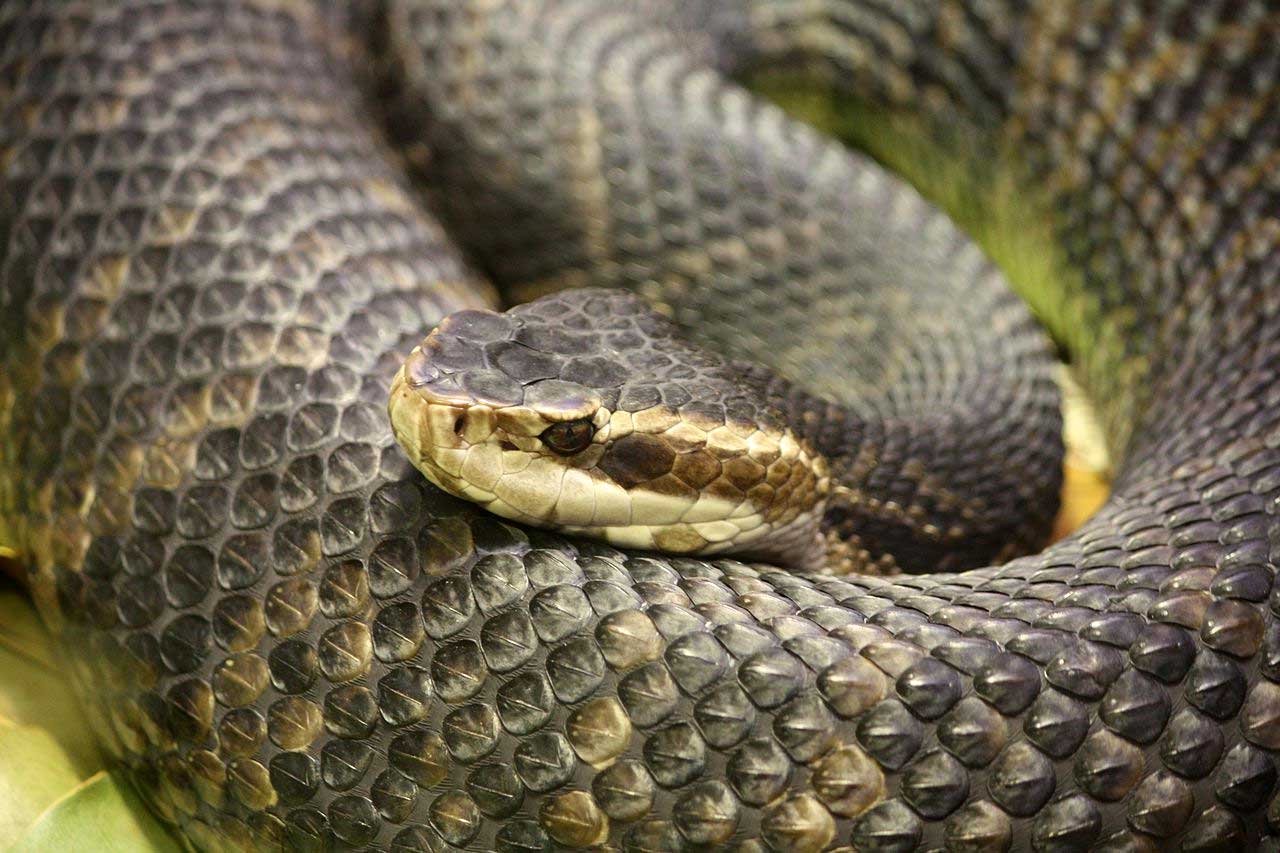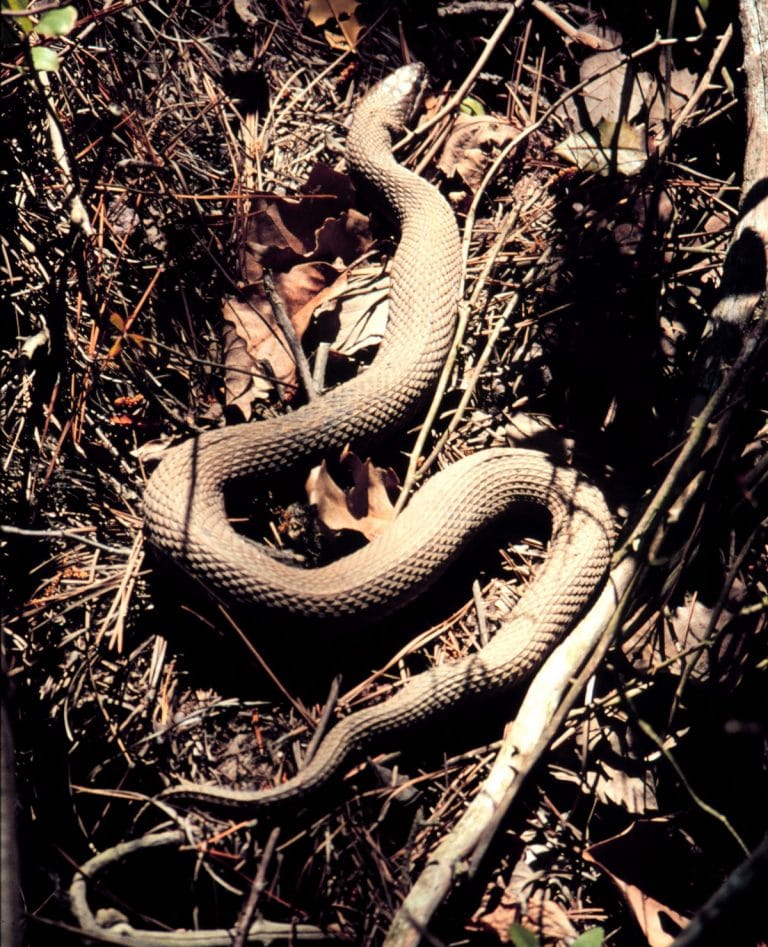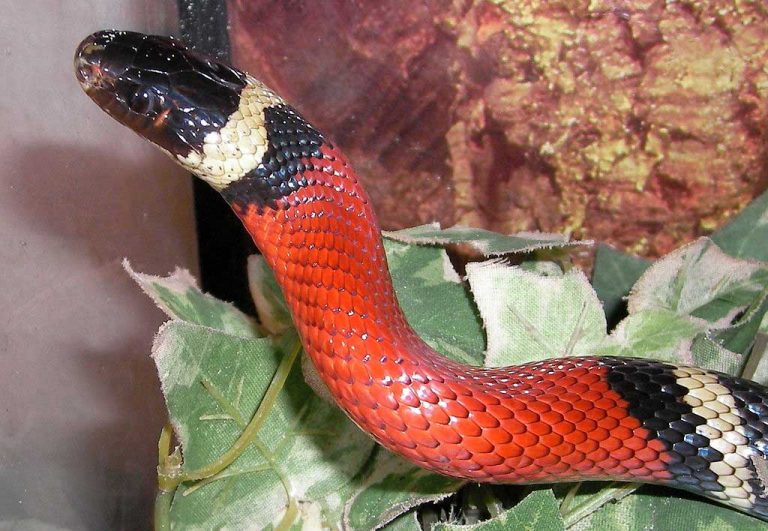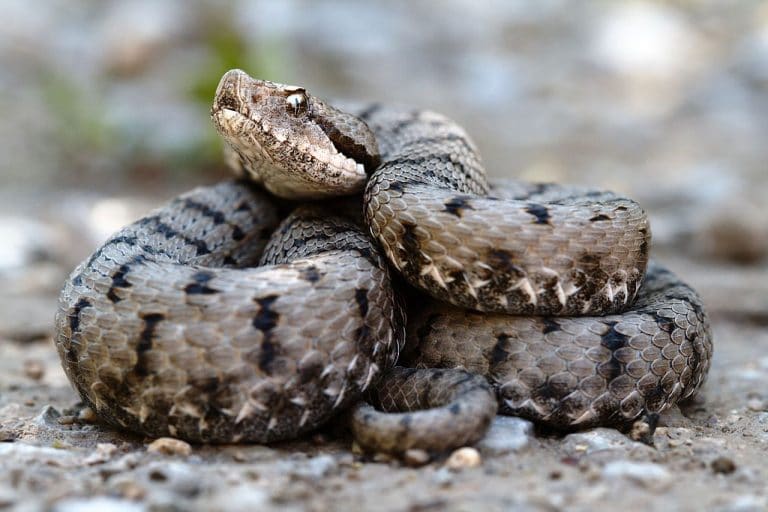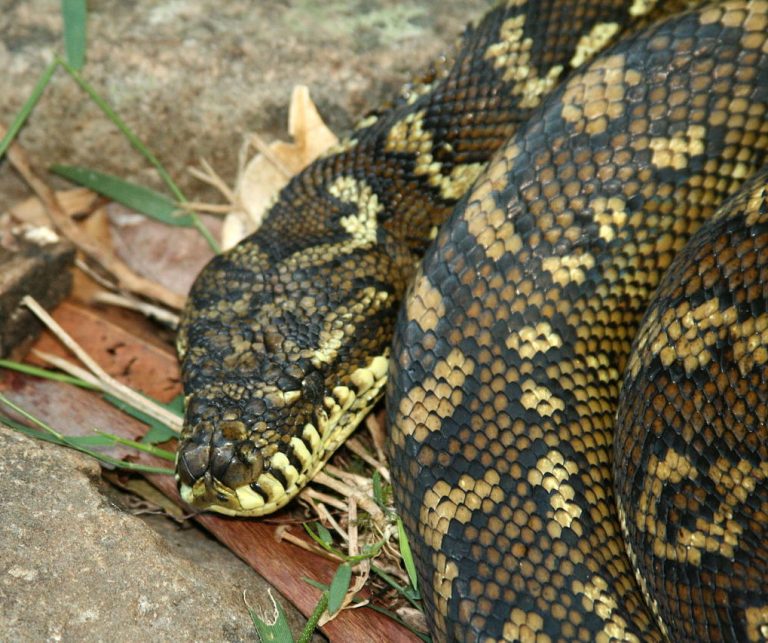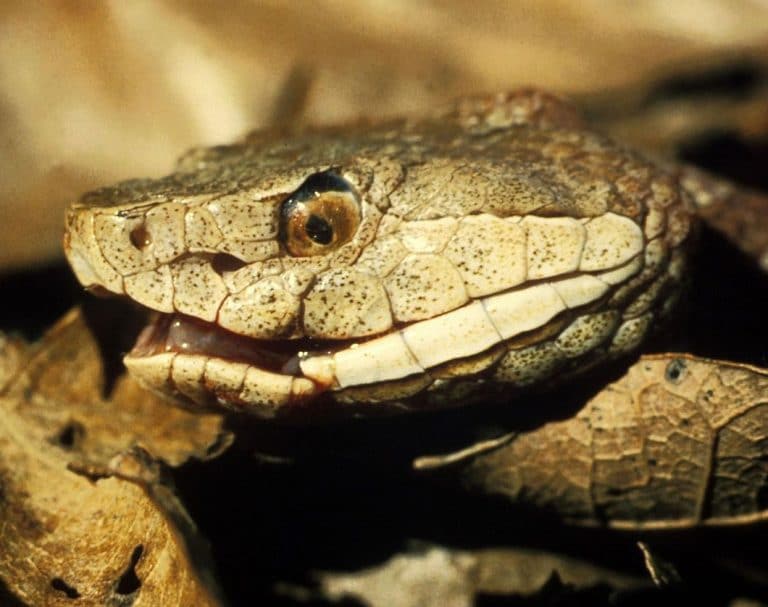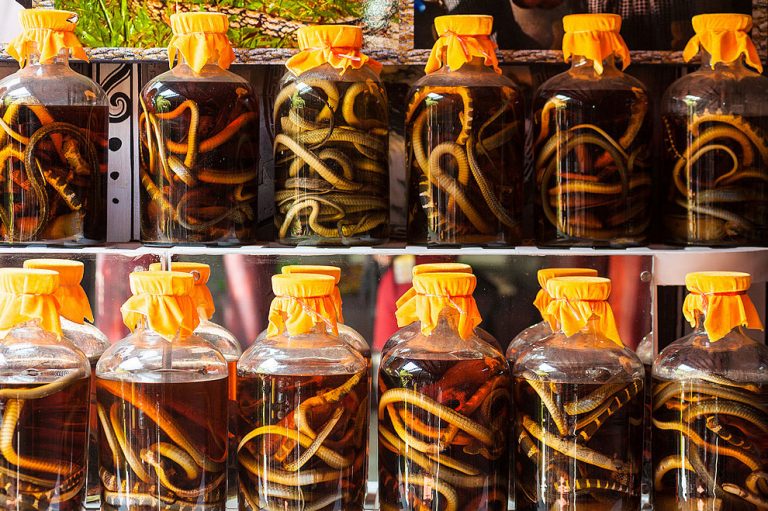Water Moccasin Snake
Scientific Classification
| Kingdom: | Animalia |
| Phylum: | Chordata |
| Subphylum: | Vertebrata |
| Class: | Reptilia |
| Order: | Squamata |
| Suborder: | Serpentes |
| Family: | Viperidae |
| Subfamily: | Crotalinae |
| Genus: | Agkistrodon |
| Species: | A. piscivorus |
| Binomial name: | Agkistrodon piscivorus |
The Water Moccasin Snake is the sole poisonous water snake on the continent of North America. A water Moccasin snake bite is hazardous; it has a unique triangular shape block-like head and is also a chunky figure. These snakes bite human beings only occasionally but attack only if they are frightened. Their natural habitat is the South eastern parts of the United States, and they are partially marine reptiles, they enjoy basking on dry land as well as swimming.
Water moccasins are also called the Cottonmouth Snake, which is biologically known as Agkistrodonpiscivorus. This snake got its name cottonmouth from the pale look of the mouth of snake, which is a defense mechanism that it exhibits. The additional colloquial names for Agkistrodon piscivorus are the Snap Jaw, Stub-Tail Snake, Water Mamba, Water Pilot, Black Moccasin, Gaper, Mangrove Rattler, Swamp Lion, and Trap Jaw.
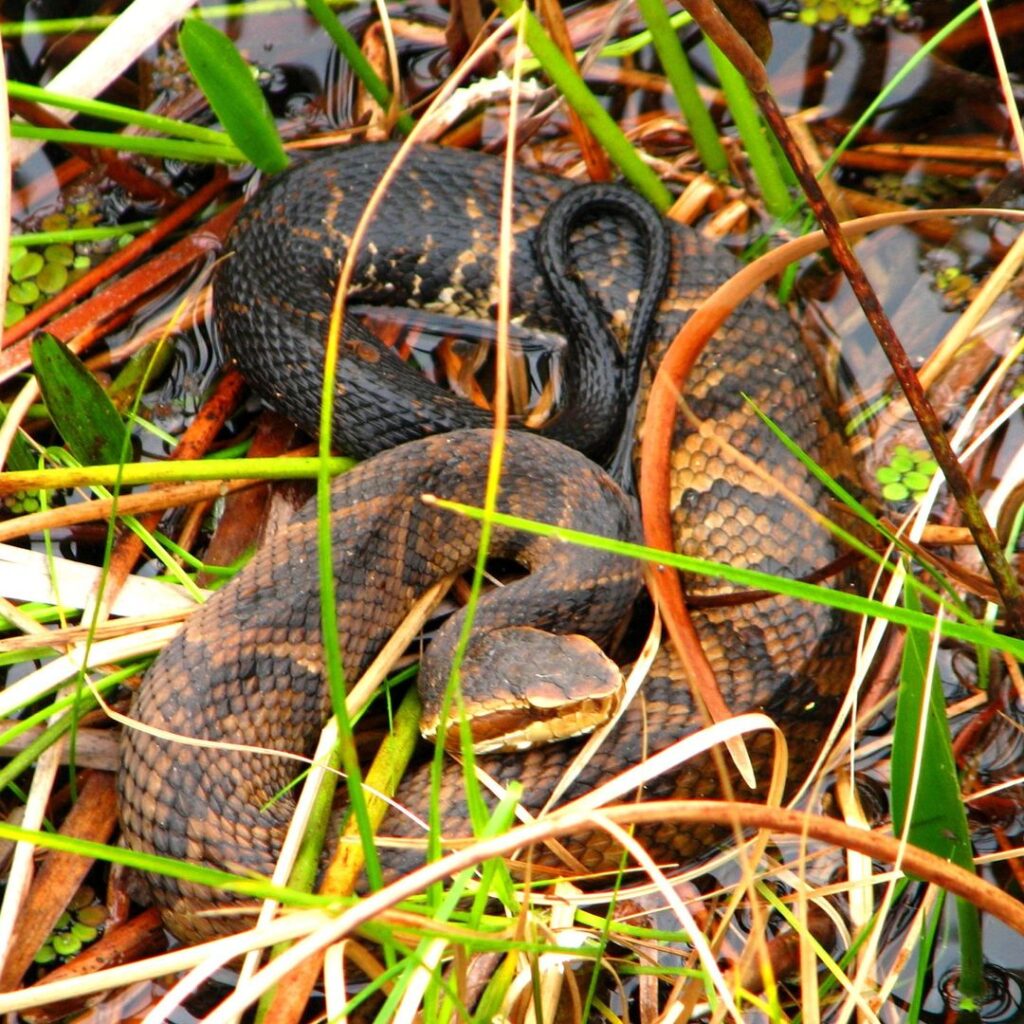
Anatomy
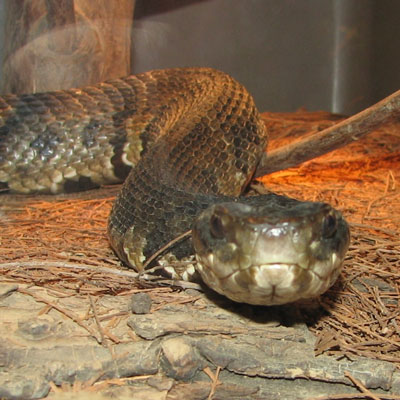
The water moccasin Snake is of comparatively bigger size; their length extends from 2 – 4 feet (61 to 12 cm). The necks of most of these snakes are not conspicuous, but as for the water snakes, they have thin necks making their big triangular shaped heads prominent. Their jaws are big, because of their gland, which stores venom, their pupils are similar to the cat’s eyes, these water snake’s nostrils have dark colored stripes and their snout is pale in color. These features assist in recognizing them.
Ridged or keeled scales cover their stout and strong bodies; they have different colors that vary from black or deep brown to yellow, with bands of yellow or brown. Their bellies are light in color when compared to their backs. The designs of the immature water moccasins are prominent, consisting of bands of dark borders, pale color in the center and tails tipped yellow. They use their tails as baits for frogs and fish. As age advances, their designs fade away or even disappear.
Behavior
The Water moccasins swim with their heads protruding and close to the surface of the water, we find them always at day and at night throughout the year; yet they hunt at night, particularly in summer. The diet of the water moccasins consists of birds, reptiles like baby alligators, lizards, turtles, fish, amphibians, small mammals, and several snakes which includes tiny water moccasins.
The temperament of the Cottonmouths changes from time to time. As they are not violent, they will not assault until they are disturbed. The specialty of this snake is their capability to “remain erect on the ground”.
Habitat
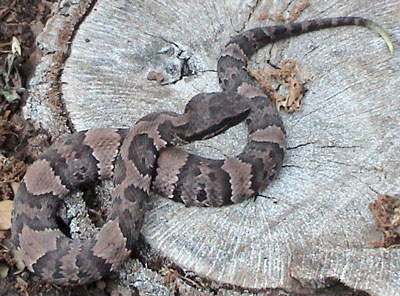
The natural habitat of the Water moccasin Snake is basically in the South East United States that extends from East Texas to Florida to Virginia. The subordinate species are of three varieties: Eastern cottonmouths, Florida and western variety.
We usually find the water moccasins in marshy places, ditches of drainage and swimming in the swamps, we also find them along the borders of streams, lakes and ponds. They are also found on land adjacent to fields and water areas. They take pleasure on basking on branches, logs and stones close to the water boundaries. Their bodies chill up very fast in water, so they sustain their body temperature by basking.
As a Pet
Breeding
Mating of the water moccasins takes place in the beginning of the summer season, following the quarrel of males for their females. The eggs of the water moccasins incubate in the womb of their mother (which means they are ovoviviparous). The female water moccasins deliver baby snakes in a gap of one or two years. In one litter, there are as many as 20 little ones. They have a gestation period from 3 to 4 months. The babies, at birth, are bright in color and they set off to live by themselves without parental care.
Housing
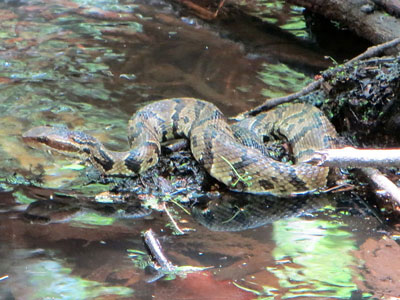
A terrarium of capacity, 50 to 75 gallons is quite sufficient for one or two Eastern Cottonmouths. As for the substrate, keep it always dry. The material must consist of many layers of paper napkins, newspaper folded into thickness, shavings of aspen or cypress. Provide a box for hiding with barriers for vision in the terrarium. Keep the container of water sufficiently large for the snake to drink water as well as submerge themselves into it. Ensure clean and pure water in the container.
Keep the terrarium illuminated at daytime. Maintain a temperature of 76 – 83 F in the enclosure of the Water Moccasin Snake. At night maintain the temperature around 70 F that is quite sufficient. Keep a lamp for basking which provides a hot spot of around 93 – 95 F during the day. In case you decide to keep the cottonmouth as a pet, retain a warm temperature and make them agile all through the winter this generates its appetite for food.
Food
Feed your cottonmouth snakes with chicks, rats and mice. These fellows consume food properly when in captivity. They take in mice and rats that are frozen and defrosted willingly. All through their life in captivity, they are comfortable with a good diet of mice and rats. In situations when your cottonmouth rejects food for any reason, it is a clear evidence that they have developed some sort of stress or ailment of some kind; if not they never refuse food.
Handling
If at any cost, you have an intention to rear cottonmouth snakes, it is mandatory that you reserve a duo snake hooks and a pair of forceps. They are, by all means, essential for your safety in rearing these poisonous snakes.

Having discovered a fondness for insects while pursuing her degree in Biology, Randi Jones was quite bugged to know that people usually dismissed these little creatures as “creepy-crawlies”.

